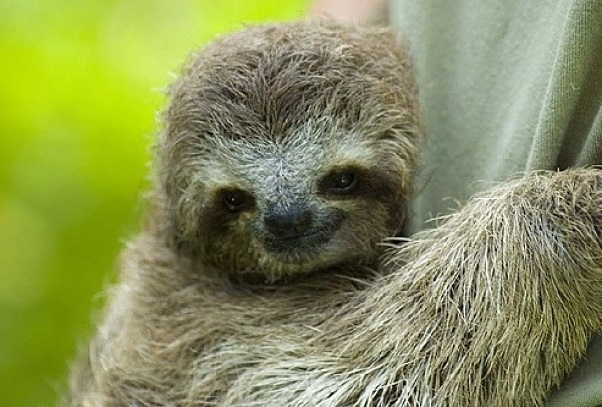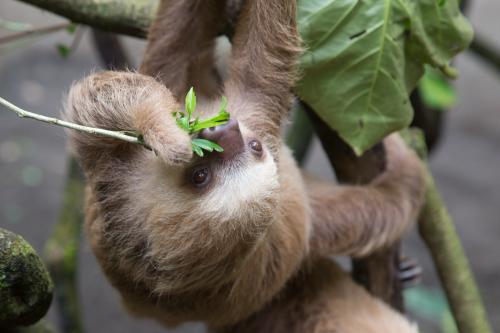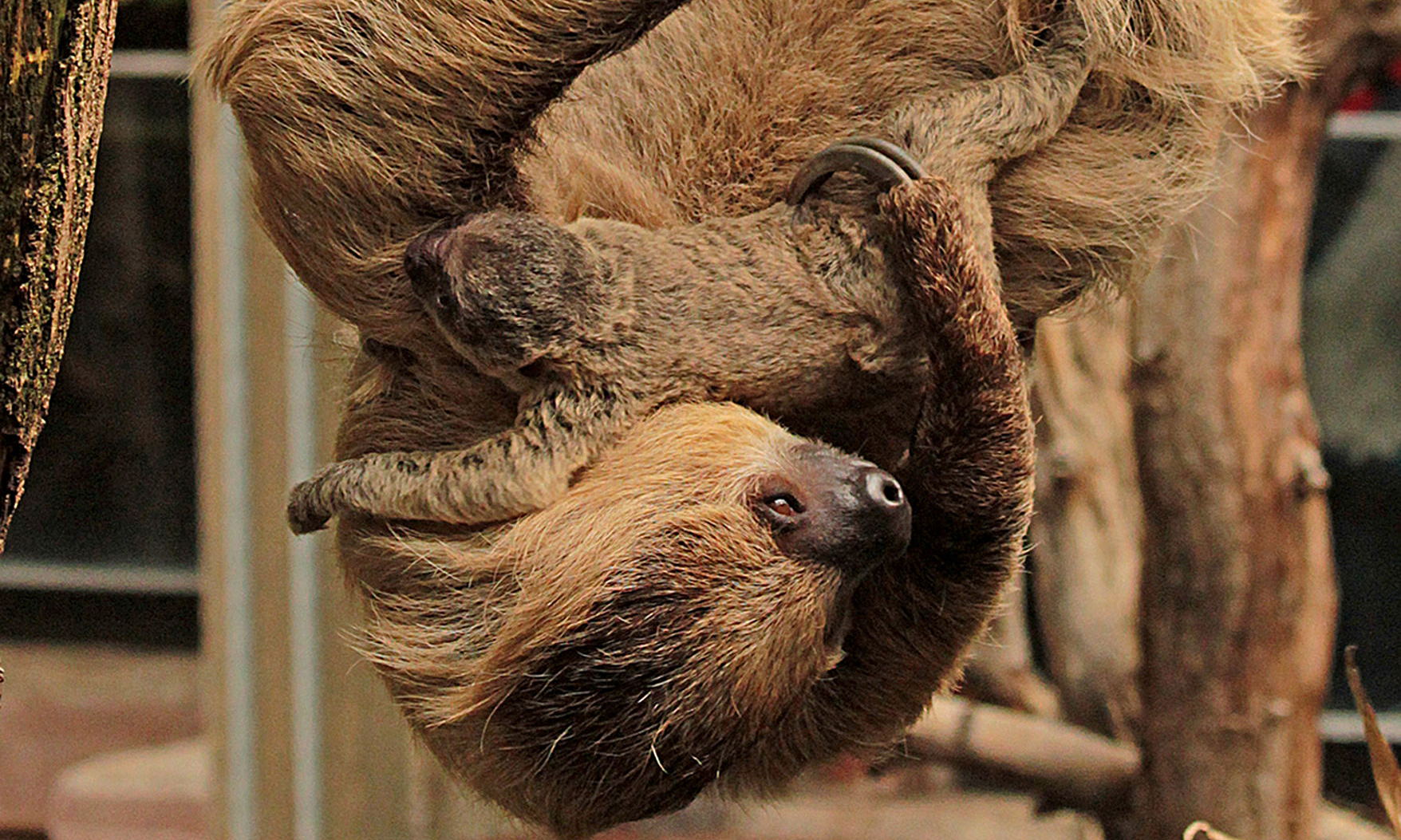How Sloths Breed

The green color of algae make sloths hide from predators in the trees. Sloths can climb only six to eight feet per minute. Sloths are wonderful swimmers. Sloths drop themselves into the water from the branches. Sloths do not shiver when it is cold as their body has only 25% muscle. The claws of sloths offer them protection against predators. Baby sloths, like humans and other animals, are taught by adult sloths. Mothers show them how to go down to the ground at least once a week. They dig a hole, use the bathroom, and cover it afterward. Don’t say that sloths are dirty animals! Well, they do have bacteria growing on their skin, but at least they have some bathroom manners! Normally, three-toed sloths are silent and docile, but if disturbed they can strike out furiously with the sharp foreclaws. Reproduction is seasonal in the brown- and pale-throated species; the maned sloth may breed throughout the year. Reproduction in pygmy three-toed sloths, however, has not yet been observed. Sloths are categorized into two types: the two-toed sloths and the three-toed sloth bears. The sloths that are two-toed are slightly bigger in size as compared to the three-toed sloths. But they both share similar features and measure around 23 to 27 inches, which is the size of a dog.
A while ago, the internet went crazy over the story of a five-month-old baby girl and her best friend: a pet sloth. The story was accompanied by photos and a video that quickly went viral, attracting attention from all over the world. The photos are admittedly cute and the resultant media-splash catapulted sloths back into the spotlight – but we fear that the negative repercussions may have outweighed the benefits on this one. The sloth pet trade is booming and it is a disaster for wild sloths.
Here's a short video of two of our two-fingered sloths breeding. We cut the video short because we receive about 600 hits a day on our web site, a lot of the.

Firstly, sloths are wild animals – not domesticated pets. These wild animals maintain their natural instincts. They are also a solitary species that lives alone in the wild. That means that they do not like to be petted, groomed or bathed because these are not natural behaviours for them. Sloths are also prey animals, and a large human hand lurching forwards to stroke them can be incredibly stressful. This is further complicated because unlike many animals, sloths do not show obvious external signs of stress. Their natural response to fear or danger is to hold still, and as a result, it is difficult to tell when a sloth is scared or stressed. The animal may look perfectly happy to us – but the reality will probably be very different.
We have absolutely no doubt that this sloth photo shoot was staged with the sole purpose of creating a viral hit. But our biggest concern is that public exposure to these images will have negative repercussions for sloths in general. Whether this was intentional or not, the tone of the story effectively glamorises the concept of owning a pet sloth. From what we have seen, the standard response to the images seems to be: “I want one”! And that is where the problems begin.

How Sloths Breed
The sad reality is, sloths that are sold as pets usually come from the wild. Even if the baby sloth was born in the US, it’s more than likely that the parents would have been taken from the wild several years earlier. Sloths are very slow to breed: the gestation period is 11 months, they only give birth to one baby at a time and this infant needs its mother’s milk for a long while after that. In the wild, baby sloths usually spend a full year with their mothers before reaching independence. This means that the sloths currently being held in captivity in the US cannot physically produce enough babies to meet the ever-increasing demand from people wanting pet sloths. So every year, hundreds of sloths are removed from the wild and shipped to the US from countries such as Venezuela and Ecuador where export laws are slack. These individuals are then forced to breed and the babies are sold into the pet trade at eye-watering prices. As a consequence of the pet trade demand, sloth numbers are crashing rapidly in the wild.
The ‘cuteness’ of a baby sloth is what everybody focuses on. The sad reality of the situation is often overlooked. The media coverage of this pet sloth story absolutely portrays the image of a happy family and we fear that many people will buy into this fantasy. This doesn’t just pose a threat to the sloths, but can also endanger the sloth owners themselves. Sloths might look fluffy but they are not teddy-bears – they are wild animals and they have big teeth. We have worked with hundreds of sloths over the years, (both wild and human-reared) and they can all inflict serious injuries if scared or irritated. We have seen a sloth bite through a human hand leaving a hole big enough that you could look through. When they reach independence (at the age of about 18 months ), even the most gentle of hand-reared sloths just do not want to be handled any longer. We suspect that many people are going to learn this the hard way and will find themselves with an expensive, hard-to-handle sloth that could live for up to 50+ years.


The anthropomorphism, exploitation and desire to “own” wild animals is by no means an issue that is confined to sloths; indeed, many species are on the brink of extinction because of it. It’s also not a problem that is confined just to the pet trade; it is much bigger than that. It’s an issue of ethics and morality. We believe that the trouble lies in the way we, as humans, have historically seen ourselves as the dominant species, and the way in which we have morally justified our use of wild animals for centuries. Thankfully, this outdated attitude appears to be quickly changing in recent years and education is unequivocally the key. As the environmentalist Baba Dioum once famously said:
How Sloths Breeding
“In the end we will conserve only what we love. We will love only what we understand. We will understand only what we are taught.”
How Do Sloths Breed
If you are considering getting a sloth as a pet, we desperately urge you to seek an alternative way to express your love for these amazing animals. You could volunteer at a reputable rescue center that works with injured and orphaned sloths (check out the Jaguar Rescue Center in Costa Rica), or you could symbolically adopt a sloth for yourself! If you have any questions about having a sloth as a pet or would like to speak to an expert about the topics we have discussed here, please email us at slothconservation@gmail.com